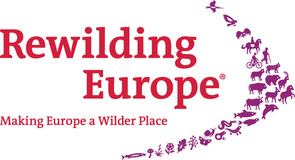
REWILDING EUROPE AWARD - Winner 2024
As part of the prestigious GDT European Wildlife Photographer of the Year competition, the Rewilding Europe Award celebrates powerful imagery that showcases the revival of Europe’s wild nature through rewilding. The Rewilding Europe Award promotes photographs that go beyond aesthetics, championing the rewilding movement’s vision of a Europe where people and nature not only coexist, but thrive alongside each other.
“The Rewilding Europe Award is more than just a photography prize,” says Laurien Holtjer, Rewilding Europe’s Director Engagement and Public Relations. “It’s a way to connect people with the rewilding movement and inspire practical rewilding efforts. These images show us what’s possible when we take action to restore nature and then let nature take the lead in managing itself. They are a testament to the resilience of our wild spaces and a call to action for a wilder, healthier future.”
The award-winning images were chosen from a collection of entries by a jury panel that included Laurien Holtjer and renowned wildlife photographer Neil Aldridge. The panel also included all members from the EWPY jury: National Geographic's Senior Photo Editor Alexa Keefe, wildlife photographer and podcaster Matt Maran, marine photographer Rachael Talibart, GDT President Stephan Fürnrohr, and conservation photojournalist Marcus Westberg.
Winner: Staffan Widstrand (SE) | Iberian lynx
This year’s award-winning photograph was shot by Swedish photographer Staffan Widstrand. Titled Iberian lynx, it depicts the resurgence of one of Europe's most iconic predators in its natural habitat, emphasising the importance of predator-prey dynamics in rewilding.
The captivating image of an Iberian lynx in its natural habitat in Spain showcases the return of this apex predator to European landscapes, highlighting how rewilding efforts are restoring natural processes and predator-prey dynamics.
"Staffan’s photograph encapsulates the magic of rewilding perfectly,” says Laurien Holtjer. “His image is not just about the beauty of the lynx. It’s about restoring the
health and functionality of nature, and the wide-ranging benefits of bringing back a species that can help to shape the environment around it.”
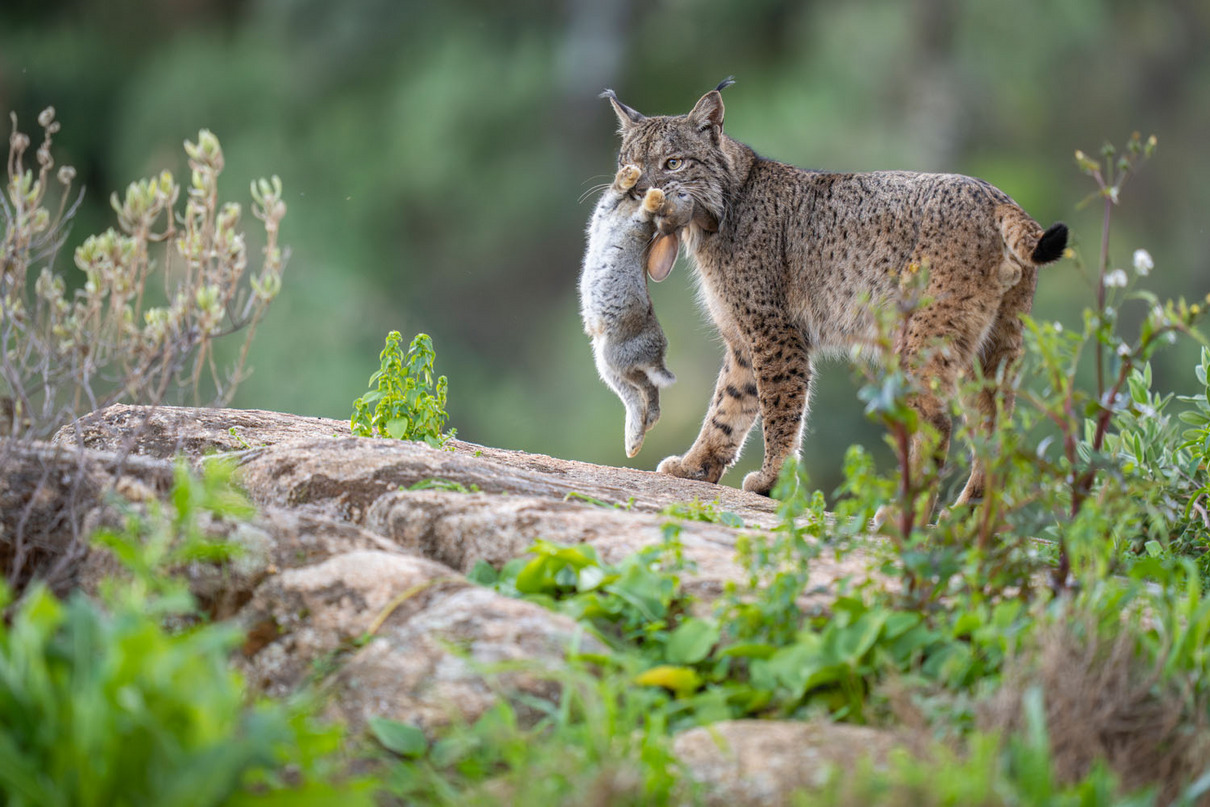
Iberian lynx
The photograph shows an Iberian lynx (Lynx pardinus) with a freshly caught European rabbit (Oryctolagus cuniculus) in the Spanish Sierra de Andújar. The Iberian lynx joins a small number of species making a comeback in recent years. From a low of around 96 individuals worldwide (restricted to Spain), the population has grown to at least 2000 and expanded to Portugal. Strict hunting regulations, a captive breeding programme, reintroductions, and promotion of large rabbit populations have all contributed to the lynx's comeback. Wildlife crossings, particularly in the form of tunnels under roads, have significantly reduced traffic-related kills. This individual was photographed from a hide on a private estate on which lynx represent a business asset that secures jobs and income.
Sony Alpha 1, 2.8/400mm, tripod, ISO 3200
Runner up: Bernhard Schubert (AT, GDT) | Huchen habitat
This year’s Rewilding Europe award also highlighted the importance of healthy river systems and marine restoration. Second prize went to Austrian photographer Bernhard Schubert for his image Huchen habitat, which vividly illustrates how rewilding efforts can breathe new life into river ecosystems. Healthy, free-flowing rivers are vibrant corridors of life, demonstrating the vital role natural processes can and should play in shaping our landscapes.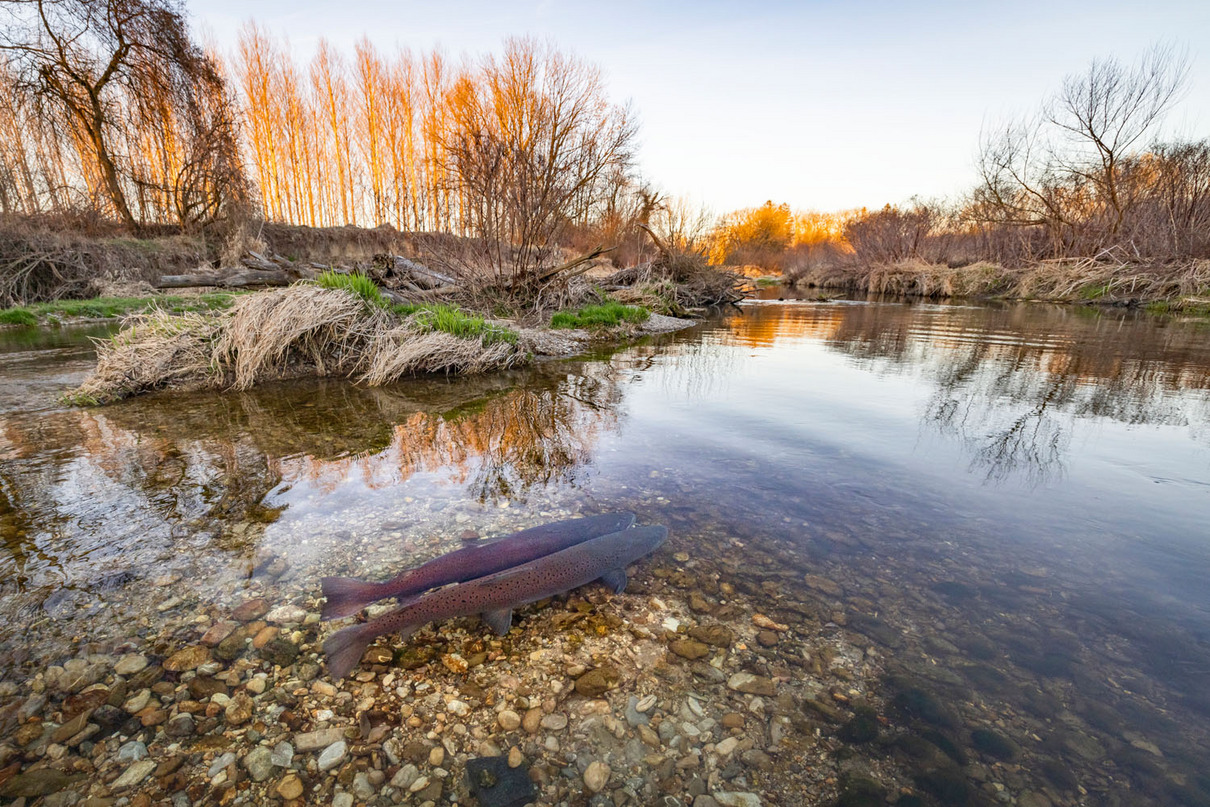
Huchen habitat
A pair of huchen (Hucho hucho), also known as Danube salmon, swim above a spawning pit dug by the female in the streambed. That huchen make it this far in their life cycle cannot be taken for granted. Being able to migrate to their spawning grounds requires barrier-free access. Insurmountable weirs are only one of the many challenges facing the fish. Sections of river that are left wild as here on the Pielach in Austria are essential.
Canon R5, 4.0/14-35mm, ISO 640, tripod, polarising filter, radio remote shutter release
Highly commended: Arthur de Bruin (NL) | Hope for the future of our rivers
The highly commended image Hope for the future of our rivers, shot by Dutch photographer Arthur de Bruin, depicts the release of juvenile European sturgeon in the River Rhine. Sturgeon species once thrived in European rivers, playing a critical role in the maintenance of healthy aquatic ecosystems. The reintroduction of sturgeon epitomises the broader revival of rivers across Europe.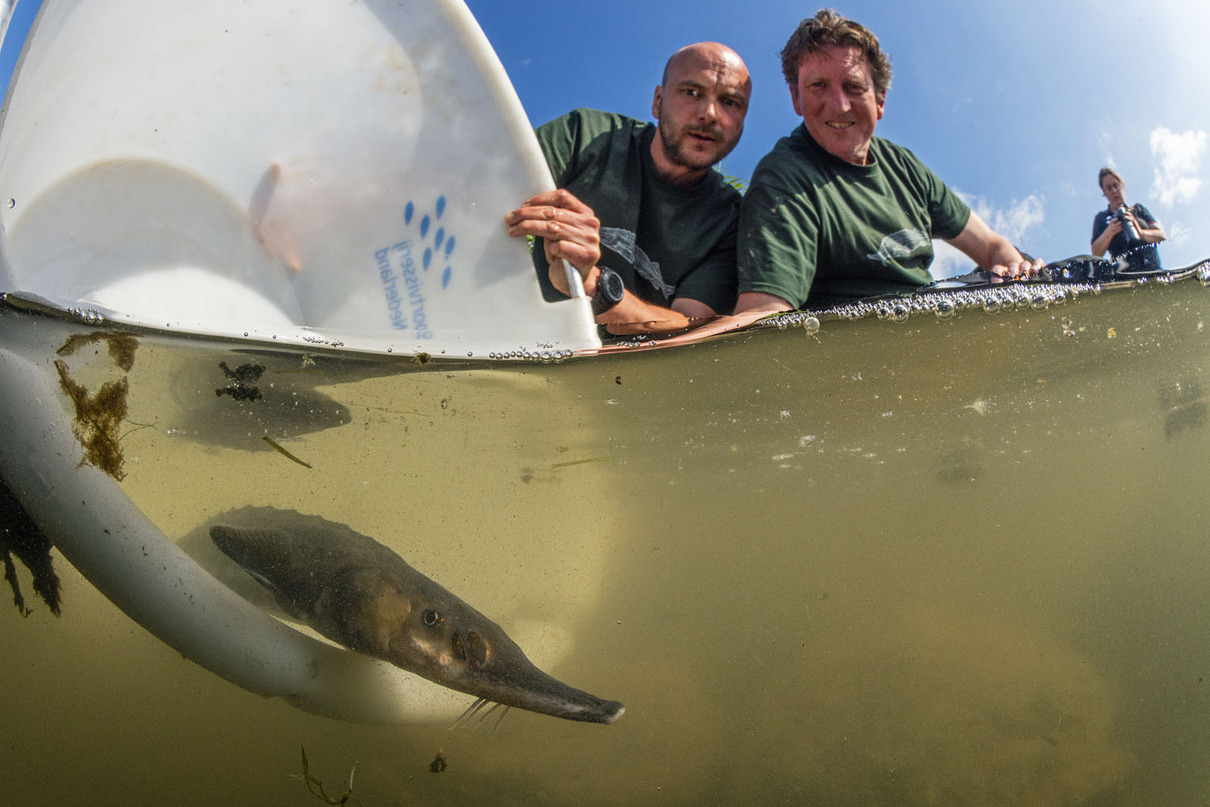
Hope for the future of our rivers
After decades, the breeding programme for the European sea sturgeon (Acipenser sturio) is showing the first signs of success with offspring being released into the river Rhine. The reintroduction of such endangered, yet formerly widespread, fish species gives us hope. Why else should we preserve these animals if not in the hope that our rivers will once again become home to locally extinct fish species?
Canon EOS R5C, 4.0/8-15mm, ISO 1000, Nauticam UW housing, Keldan UW video light
Highly commended: Lewis Jefferies (GB) | Seeds of hope
The highly commended image Seeds of hope by British photographer Lewis Jefferies captures underwater efforts to regenerate seagrass meadows. His photograph showcases the role of seagrass beds as a critical habitat that supports marine biodiversity, captures and stores carbon, and enhances water quality. While rewilding emphasises natural regeneration, Lewis's image shows how initial interventions can sometimes be necessary to kick-start the recovery of vital ecosystems, providing a foundation for nature to flourish independently.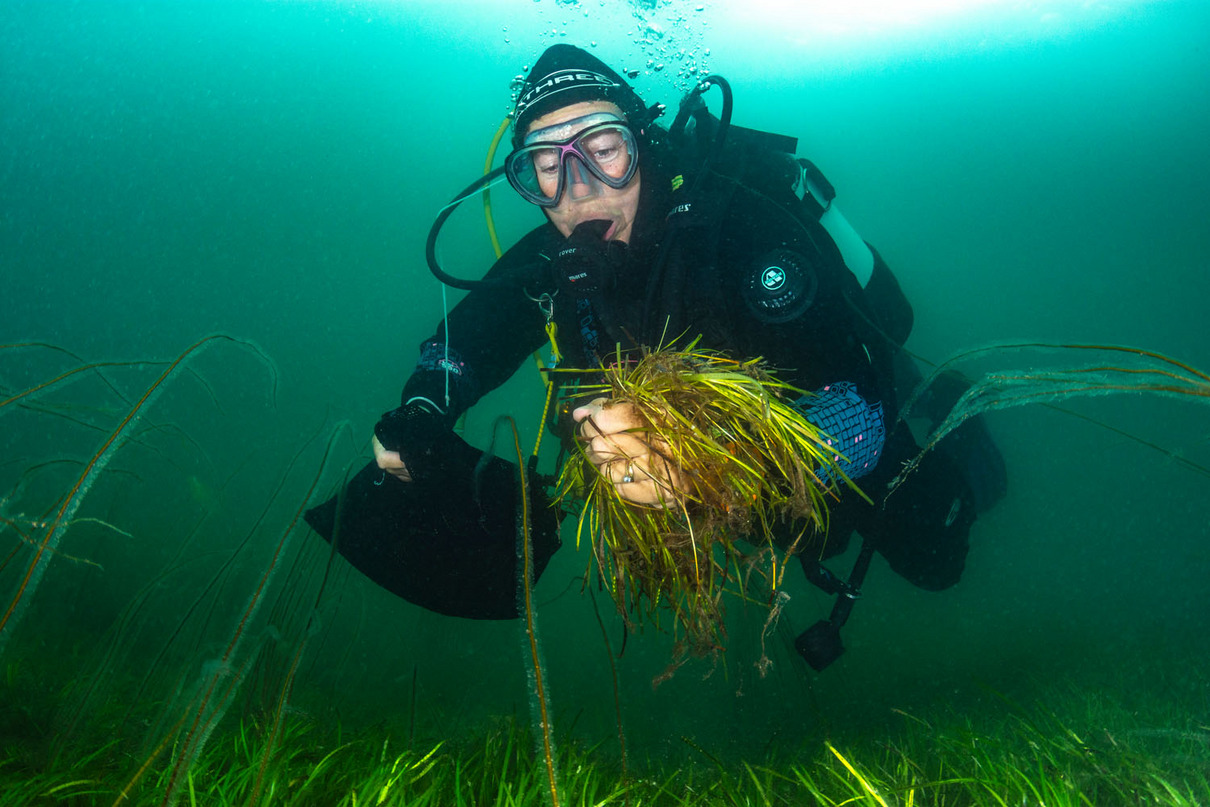
Seeds of hope
A marine biologist from Project Seagrass collects seagrass (Zostera marina) seeds in Porthdinllaen, North Wales, as part of the initiative Seagrass Ocean Rescue in partnership with WWF-UK and Sky Ocean Rescue. The samples are then sent to Swansea University for propagation and transferred to the Dale coast in Pembrokeshire as part of the UK's largest seagrass reintroduction initiative with the aim of establishing one million plants. Around the world, seagrass meadows have been lost due to human impact – including water pollution, shipping and climate change – and it is essential that action be taken now to safeguard this important habitat for the future. Seagrass, one of a small number of marine flowering plant species, plays an extremely important role in marine ecosystems as it absorbs large amounts of carbon from the atmosphere and is both habitat and nursery for diverse marine animals, including endangered (e.g., seahorses) and commercially important (e.g., cod and saithe) species.
Nikon D7200, 3.5-4.5/10-17mm fisheye, Nauticam UW housing, 2 Inon UW flashes, ISO 400
Highly commended: Florian Smit (DE, GDT) | King of the East
The restoration of natural processes also provides the backdrop for the highly commended photograph King of the East, which was shot by German photographer Florian Smit. Florian’s image, which features a majestic European bison in Poland's Białowieża National Park, celebrates the remarkable comeback of this iconic species in Europe, which is supported by ongoing rewilding efforts in many countries.As a keystone species, the European bison plays a vital role shaping its habitat. Historically, free-roaming herbivores such as bison and wild horses shaped Europe’s landscapes through their grazing, browsing, and other behaviour, creating a rich mosaic of habitats that supported a wide range of other wildlife. Reintroducing these large grazers boosts the restoration of essential ecological processes and can support the development of nature-based economies.

King of the East
This photograph shows one of the numerous European bisons (Bison bonasus) reintroduced to Poland's Bialowieza National Park near the border with Belarus. In 1927, the last free-living bison in the Caucasus was shot and the species was considered extinct in the wild in Europe. With the help of a small group of animals from zoological gardens and private owners, the European bison was saved from extinction. As of 2023, around 7,200 individuals exist in Europe. However, habitat fragmentation and low genetic diversity continue to pose challenges to the survival of this species.
Nikon D810, 2.8/400mm, 2x converter, ISO 800








